Residents of Muzaffaragarh and Multan face a dangerous double threat as two separate flood sources converge on these Pakistani cities. This developing crisis puts hundreds of thousands of people at risk and could devastate the region’s economy.
This analysis is for local residents, emergency responders, government officials, and anyone concerned about Pakistan’s flood management challenges. We’ll examine why these twin cities are so vulnerable to flooding due to their unique geographic position between major rivers. You’ll also learn about the immediate dangers facing families and businesses in both areas, plus what authorities are doing to prepare for and respond to this emergency.
The situation demands urgent attention as rising water levels threaten to overwhelm existing defenses and displace entire communities across both districts.
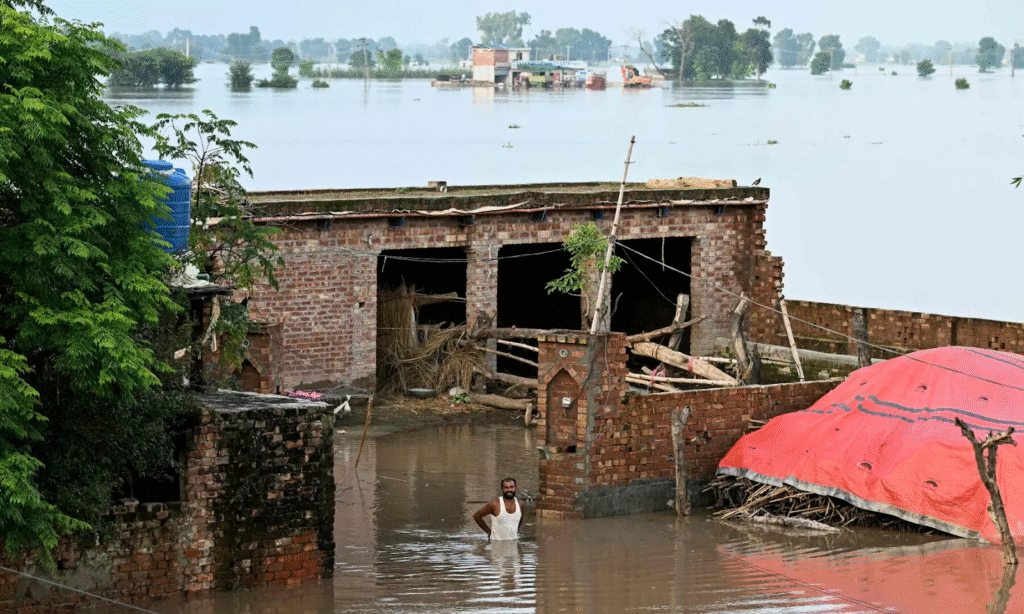
Historical flooding patterns reveal recurring vulnerabilities
Both cities have experienced devastating floods repeatedly over the past decades, creating a clear pattern of vulnerability. The 2010 floods stand out as particularly catastrophic, affecting over 20 million people across Pakistan, with Muzaffaragarh and Multan among the worst-hit areas. These floods displaced hundreds of thousands of residents and destroyed crops, homes, and infrastructure on a massive scale.
The 2014 floods brought similar devastation, proving that the underlying problems hadn’t been resolved. Water levels reached dangerous heights again, forcing mass evacuations and causing billions in economic damage. Local records show that significant flooding occurs roughly every 3-5 years, with smaller flood events happening almost annually.
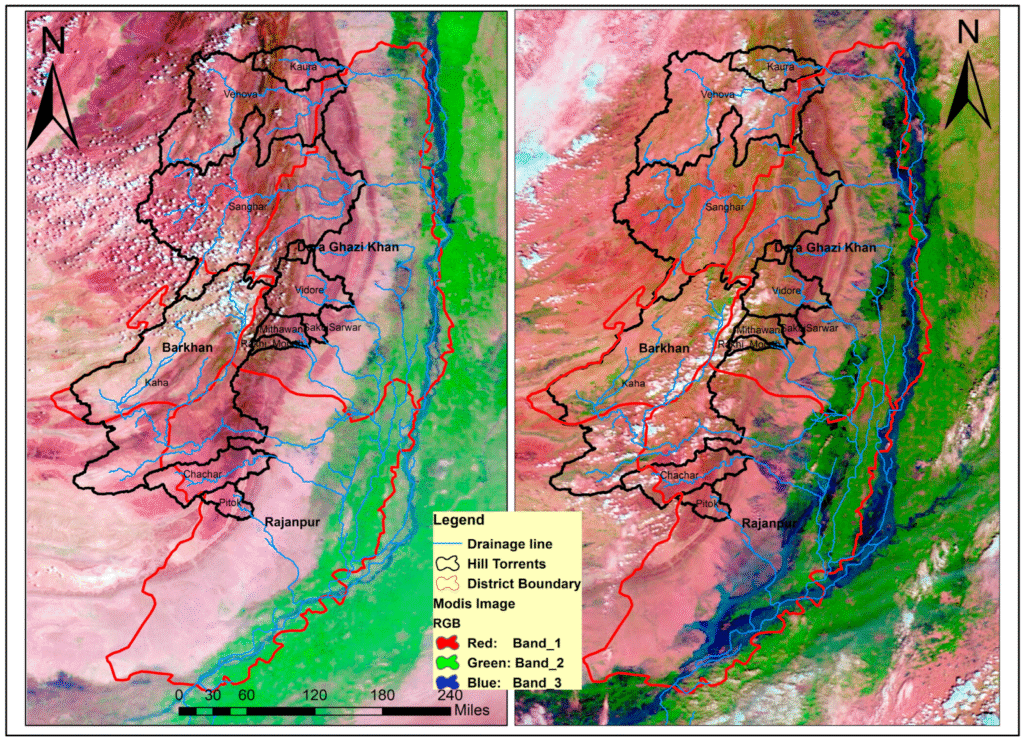
Indus River System Overflow Predictions and Current Levels
The Indus River, Pakistan’s lifeline, presents the most significant flood threat to both Muzaffaragarh and Multan. Current water levels at key monitoring stations show alarming increases, with Taunsa Barrage recording flows approaching 350,000 cusecs – dangerously close to its maximum capacity of 400,000 cusecs. Upstream conditions in Kalabagh and Chashma barrages indicate sustained high water levels that continue feeding into the system.
Monsoon Rainfall Intensity Exceeding Drainage Capacity
This monsoon season has delivered rainfall intensities 40% above normal levels across central Punjab. Muzaffaragarh district recorded 180mm of rain in just 48 hours last week, while Multan received 145mm during the same period. These volumes far exceed the drainage infrastructure’s design capacity, which was built for handling typical monsoon loads.
Urban drainage systems in both cities show signs of severe stress:
- Muzaffaragarh: Main drainage channels operating at 95% capacity
- Multan: Storm water systems backing up in 12 major neighborhoods
- Rural areas: Agricultural drainage overwhelmed, creating inland flooding
Local topography compounds the problem, as both cities sit in low-lying areas where water naturally accumulates before flowing toward major rivers.
The timing of water releases from multiple points creates unpredictable flood waves that make emergency response planning extremely difficult. Communication gaps between dam operators and local authorities often leave communities with insufficient warning time to implement evacuation procedures.

Thousand of families living along the riverbanks and low-lying settlements face immediate displacement as water levels continue rising. The most vulnerable communities include those residing in katchi abadis (informal settlements) near the Indus and Chenab rivers, where makeshift homes offer little protection against surging waters. Emergency management officials have identified over 150 neighborhoods requiring immediate evacuation, affecting approximately 75,000 residents across both districts.
Critical infrastructure at risk of submersion
Power generation facilities, water treatment plants, and major highways face severe flooding threats that could paralyze both cities for weeks. The Muzaffargarh thermal power plant, which supplies electricity to millions across Punjab, sits dangerously close to projected flood zones. If water reaches critical levels, the facility may need emergency shutdown, creating widespread blackouts.
Agricultural land and crop destruction projections
Cotton, sugarcane, and wheat crops covering nearly 400,000 acres face complete destruction if flood waters persist for more than 48 hours. This agricultural heartland produces some of Pakistan’s most valuable cash crops, with cotton alone contributing billions to the national economy. Farmers who invested heavily in seeds, fertilizers, and irrigation systems now watch their investments disappear under muddy waters.
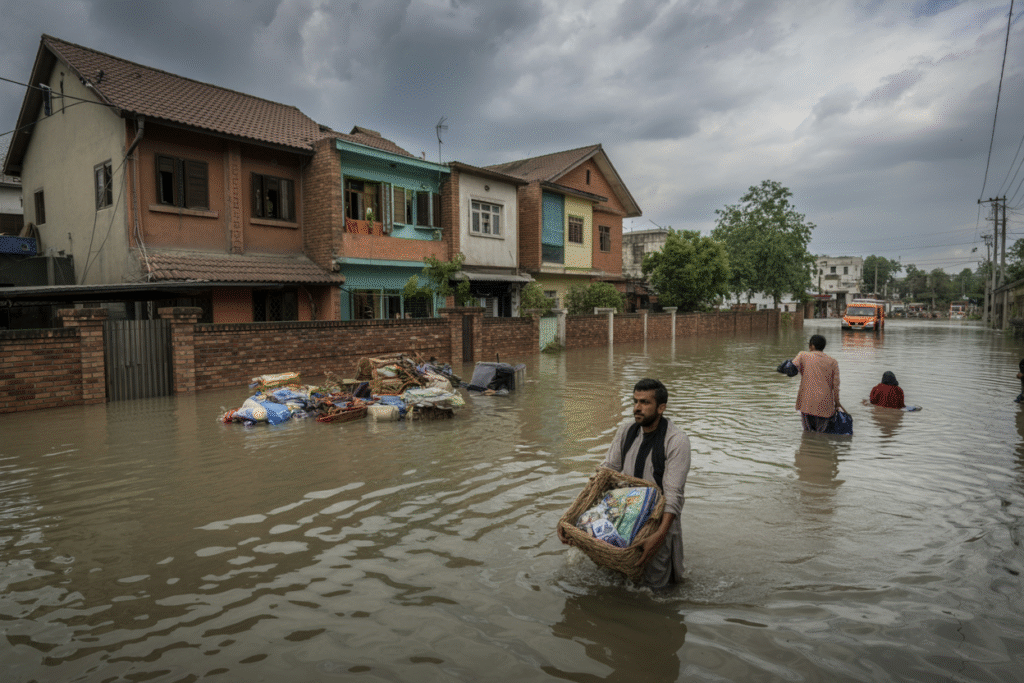
Provincial disaster management coordination efforts
The Punjab Provincial Disaster Management Authority (PDMA) has activated its emergency protocols across both Muzaffaragarh and Multan districts. Regional coordination centers have been established in each city to streamline communication between local district administrations, rescue services, and provincial headquarters. These centers operate round-the-clock, monitoring water levels and coordinating resource allocation based on real-time flood progression data.
District commissioners from both regions participate in daily video conferences with the PDMA leadership, sharing ground-level assessments and resource requirements. The coordination framework includes dedicated communication channels connecting village-level disaster management committees with district headquarters, ensuring rapid information flow from the most vulnerable communities.
Relief camps and temporary shelter arrangements
Emergency shelter facilities have been set up across 45 locations in Muzaffaragarh and 38 sites in Multan, primarily utilizing government schools, community centers, and religious facilities. Each camp accommodates between 200-500 displaced families, with separate sections for women, children, and elderly residents to maintain privacy and dignity during displacement.
Relief camp infrastructure includes:
- Basic medical facilities with trained paramedics
- Clean water supply through tanker services and portable filtration units
- Temporary toilet facilities and hygiene stations
- Community kitchens providing hot meals three times daily
- Separate sleeping areas with basic bedding supplies
- Designated areas for livestock accommodation
Local NGOs and community organizations have partnered with government agencies to manage day-to-day camp operations. Volunteer coordinators maintain resident registries, track medical needs, and facilitate family reunification services for separated relatives.
Early warning systems activation for timely alerts
Multi-channel warning systems broadcast flood alerts through radio stations, television networks, and mobile SMS services across both districts. Community-based warning networks utilize mosque loudspeakers, school bells, and village drummers to reach residents without access to electronic media.
The meteorological department provides hourly updates on rainfall patterns and river discharge levels, feeding data into automated alert systems. Water level sensors installed at critical points along the Chenab and Indus rivers trigger immediate warnings when flood thresholds are exceeded.
Military and rescue services deployment strategies
Pakistan Army engineering corps have deployed heavy machinery for emergency dam construction and breach repair operations along vulnerable riverbanks. Military helicopters conduct aerial reconnaissance missions, identifying stranded populations and coordinating rescue operations in inaccessible areas.
Rescue 1122 services have positioned specialized flood rescue teams at strategic points throughout both districts. These teams utilize inflatable boats, life jackets, and rope rescue equipment to evacuate residents from flooded areas. Additional rescue personnel from neighboring districts have been deployed to supplement local capacity.
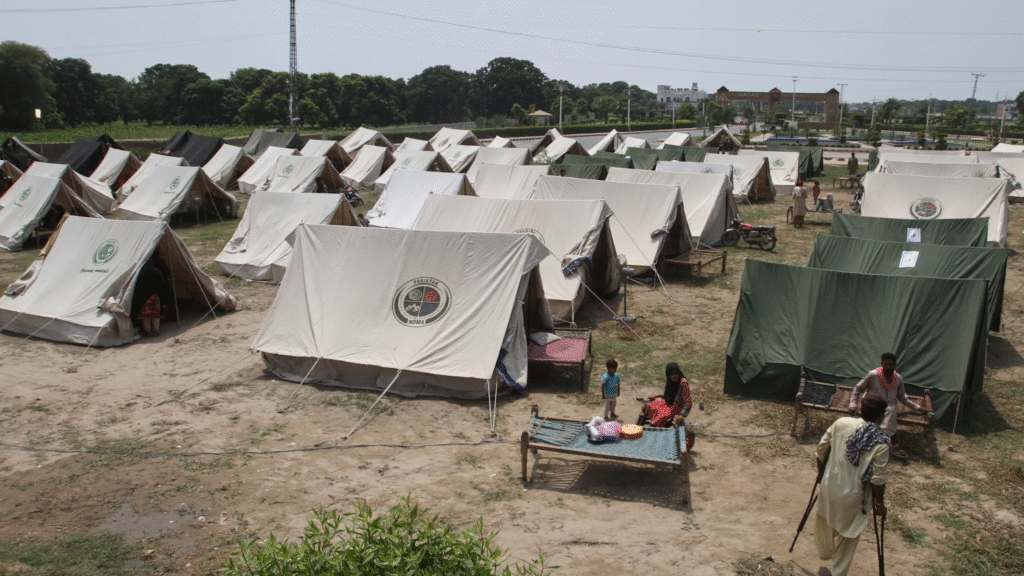
Improved Drainage Infrastructure Development Needs
The current drainage systems in Muzaffaragarh and Multan simply can’t handle the volume of water during peak flood seasons. These cities need a complete overhaul of their drainage networks, starting with expanding the capacity of existing storm drains and building new channels that can redirect excess water away from populated areas.
River Management and Embankment Strengthening Projects
Pakistan’s rivers are powerful forces that demand respect and proper management. The Indus River system that affects both cities needs strategic intervention points where flow can be controlled and redirected during crisis periods.
Community-Based Disaster Preparedness Programs
Local communities are the first line of defense against flooding, and they need proper training and resources to protect themselves effectively. Neighborhood emergency response teams can learn basic rescue techniques, first aid, and evacuation procedures that don’t require professional equipment.
Community-Based Disaster Preparedness Programs
Local communities are the first line of defense against flooding, and they need proper training and resources to protect themselves effectively. Neighborhood emergency response teams can learn basic rescue techniques, first aid, and evacuation procedures that don’t require professional equipment.
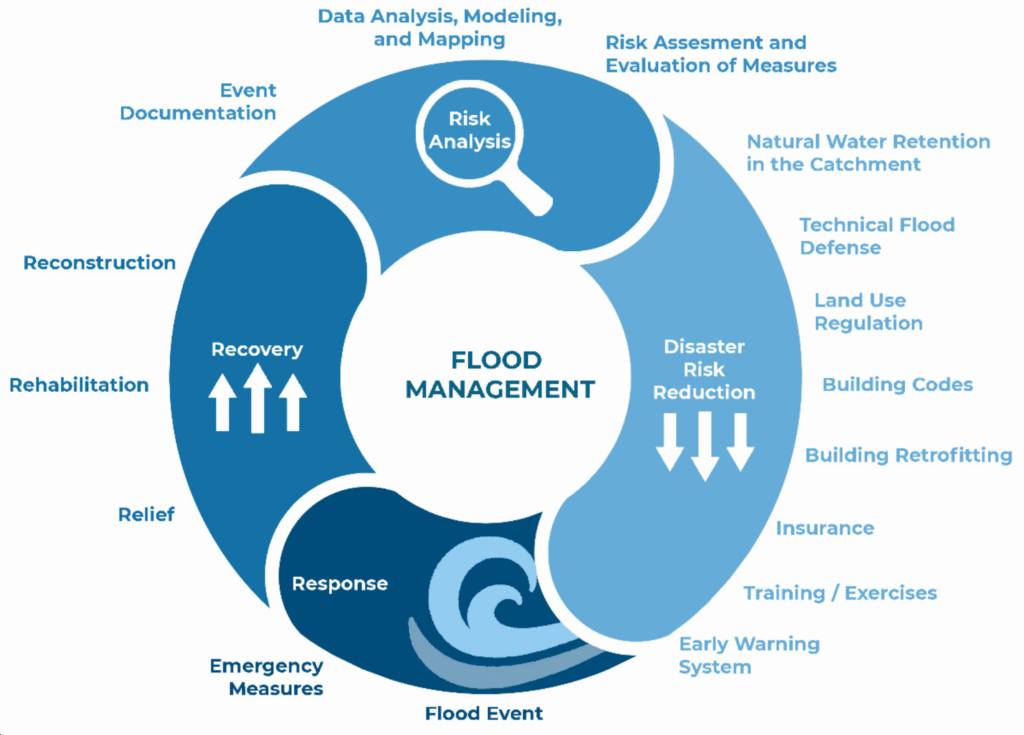
Conclusion
The flooding crisis facing Muzaffaragarh and Multan highlights how geography can make entire regions vulnerable to multiple water sources at once. These cities are caught between river systems that can quickly turn dangerous, putting thousands of lives and billions in property at risk. The government’s emergency response shows they’re taking this seriously, but the real test will be how quickly they can mobilize resources and coordinate relief efforts across both areas.
What’s clear is that Pakistan can’t keep playing defense against floods every year. The economic damage goes far beyond immediate losses – it disrupts trade routes, destroys farmland, and sets back development for years. The country needs to invest in better early warning systems, improved drainage infrastructure, and community-based disaster preparedness programs. Without these long-term solutions, Muzaffaragarh and Multan will keep facing the same devastating cycle, and the costs will only get higher.